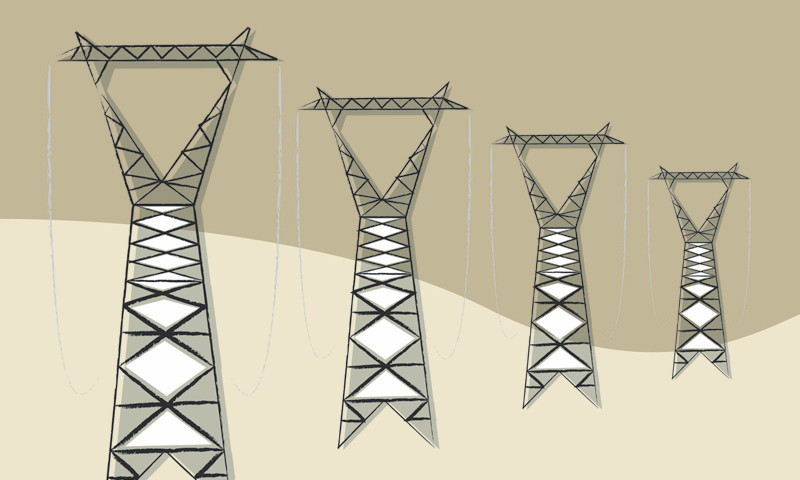There is no safe location for Bipole III
Province’s dominant energy priority should be aggressive reduction in energy use, not expansions to supply
While Manitoba Hydro’s multi-billion dollar Bipole III transmission project has sparked much debate, one assumption remains unchallenged: the assumption that more Hydro mega-projects make sense in an age of climate energy crisis.
More than 70 per cent of the electricity generated in Manitoba now flows from the north along a single transmission corridor between Lake Winnipeg and Lake Manitoba that is home to Bipoles I and II. This concentration of transmission makes Manitoba Hydro’s system susceptible to extreme weather. The current Bipoles also operate near capacity and above optimal capacity, from an efficiency standpoint.
Plus, with plans for another 2,380 megawatts of generation capacity in the north, Manitoba Hydro needs another major transmission line. According to internal Hydro documents from 2000 – obtained under Access to Information legislation by Manitoba Wildlands – the utility’s preference was for a route on the east side of Lake Winnipeg.
But Hydro is a Crown Corporation, and the Crown – in the form of former Premier Doer – had a different plan.
Doer became convinced of the value of protecting the east side of Lake Winnipeg, one of the largest pieces of intact boreal forest in the world, and decreed that the line would go down the other side of the province.
His last act as premier was to designate $10 million toward a trust fund designed to gain a UNESCO World Heritage Site designation for 4.3 million hectares of boreal forest on the east side.
In the nearly two years since then, the provincial government has been forced to defend this decision, particularly now that the provincial Progressive Conservatives are trying to make it an election issue.
The PCs note that the government’s preferred west side line is 1,384 kilometres long – about 500 kilometres longer than the east side route – and therefore $3.2 billion more expensive (though the Winnipeg Free Press, which also favours an east side route, says the real figure is probably closer to $1 billion).
Critics of the west side route also say it would also be less efficient because a longer line means more power lost in transmission (a reality of power transmission), and they claim that an east side route would not jeopardize the UNESCO designation.
Provincial PC leader Hugh McFadyen has promised to switch Bipole III back to the east side if elected next month. But the NDP say that since Hydro is well into the process of planning, consultation and environmental approvals for the west side, a decision to switch to the east side would cause delays that would jeopardize export contracts with American utilities.
“ Whichever side of the province the bulldozers head for, Manitobans need to recognize that there is simply no clean or green way to build an industrial mega-project
Whether Bipole III becomes a decisive election issue or not, the Oct. 4 vote will determine where the line goes.
Despite these high stakes, the Bipole debate will unfortunately not consider a more fundamental question than east versus west.
Manitobans should be asking whether more energy mega-projects – the $3.3-billion Bipole line plus the $13-billion worth of dams to which it will link – are a prudent energy path. Is more energy what North America needs?
Even if exports of hydropower to the U.S. displace some coal-fired generation there, will North America really be better off with all its rivers choked with dams – especially if energy consumption, coal use and global temperatures still continue to grow as predicted?
The dominant energy priority should be aggressive reduction in energy use, not multi-billion dollar expansions to supply.
Predictably, both sides in the Bipole debate claim their favoured route is the green option.
However, neither option is good for the earth per se. Both involve blazing a 66-metre-wide swath of land through various landscapes. The west side route, favoured by most environmentalists, would have an 8,900-hectare footprint.
Whichever side of the province the bulldozers head for, Manitobans need to recognize that there is simply no clean or green way to build an industrial mega-project.
Will Braun works for the Interfaith Task Force on Northern Hydro Development (www.energyjustice.mcc.org). See his article “Nation of the dammed” at www.this.org/dammed for more about hydropower exports and climate change.
Published in Volume 66, Number 3 of The Uniter (September 15, 2011)







